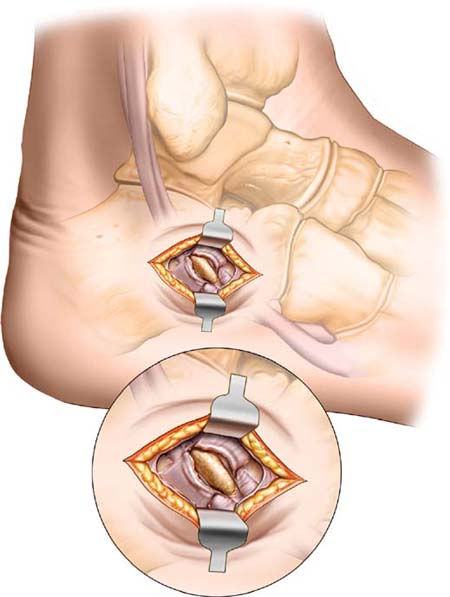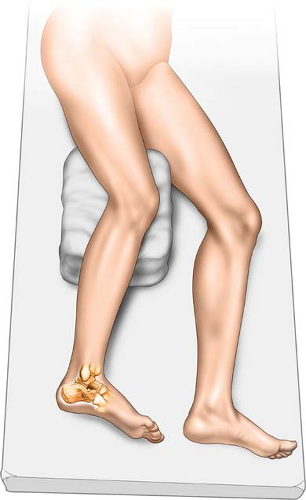 Lateral Approach to the Hindfoot (Posterior Part of Grice)
Lateral Approach to the Hindfoot (Posterior Part of Grice)The lateral approach to the hindfoot is used mainly to provide excellent exposure of the peroneal tubercle. It also gives access to the peroneal tendons, and can be extended both proximally and distally to provide wider exposure of the structures of the lateral side of the hindfoot, the distal fibula, and Achilles tendon.
Position of the Patient
Place the patient in a lateral position on the operating table (Fig. 11-1). Ensure that all bony prominences are carefully protected. Exsanguinate the limb by elevating it for a few minutes or by applying a rubber tourniquet, then inflate a pneumatic tourniquet applied to the mid-thigh.
Landmarks and Incision
Palpate the lateral malleolus at the distal end of the fibula. The lateral wall of the calcaneus is subcutaneous and lies below the lateral malleolus. The size of the peroneal tubercle varies. It may be quite prominent and thus easily palpable somewhat posterior to the line of the fibula. The lateral process of the talus is felt immediately beneath the distal fibula and somewhat anterior to it. The peroneal tendons also are visible and palpable. Make a 2-cm longitudinal incision in line with the long axis of the foot directly over the peroneal tubercle, distal to the fibula and lateral process of the talus (Fig. 11-2). Make the incision longitudinal to reduce the possibility of damage to the sural nerve, which runs in line with the skin incision.
 Figure 11-1 Place the patient in a lateral position on the operating table.
Stay updated, free articles. Join our Telegram channel
Full access? Get Clinical Tree
 Get Clinical Tree app for offline access
Get Clinical Tree app for offline access

|